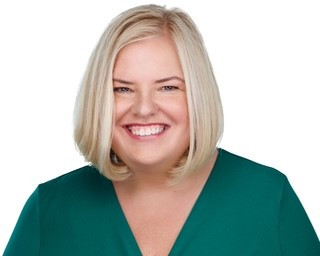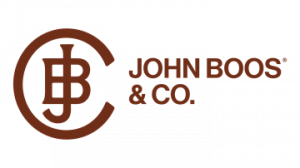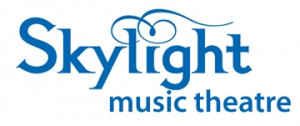
Marci Pelzer’s career is rooted in Milwaukee—but her impact stretches far beyond.
From earning her journalism degree at Marquette University to shoring up corporate strategy with an Executive MBA from Kellogg, she’s navigated both the newsroom and the boardroom. Along the way, she’s built media relationships that landed her clients on CNBC’s Mad Money and in the pages of the Wall Street Journal, Bloomberg and Reuters, all while serving on boards from the Girl Scouts to the Kinship Community Food Center.
In this Q&A, Marci shares what drives her community involvement (“I owe my stability to a family that invested everything they had in their kids”), why quality networks beat quantity every time, and how nonprofit storytelling differs from its corporate counterpart. She’ll talk straight about the consultant’s trade-off between adventure and stability, share the one communication skill she learned in the classroom that every professional needs, and look ahead to the biggest shifts—and opportunities—awaiting communicators in an AI-charged world. Read on for her advice on leading teams, serving on boards and making every message matter.
You built a significant career in Milwaukee and clearly invested heavily in the community. What motivates you to get involved and give back?
I’m motivated by my good fortune, knowing that I owe my stability to a family that invested everything they had in their kids. My dad came from nothing and lived his motto, “I am my brother’s keeper.”
Not that I’ve reached that ideal, but if more people embraced that mindset, whether through service, philanthropy or mindful voting, the most vulnerable in our community would be much better off.
You've served on boards ranging from Girl Scouts to Wisconsin Policy Forum to Kinship Community Food Center. How has board service informed your work as a communicator?
I took a fascinating class about social networks at Kellogg. The lasting insight was that it’s the quality rather than the quantity of ties in your network that matters.
it’s the quality rather than the quantity of ties in your network that matters.
When you serve on a board with someone, you’re building something lasting and meaningful as you solve problems and push through setbacks together.
Lunches and networking events are great, but to build deeper and more meaningful ties, you need to really dig in and ground the relationship in something that matters.
You earned your journalism degree from Marquette and later added an Executive MBA from Kellogg. How did that additional business education change your approach to communications strategy?
Being one of two communicators in my Kellogg cohort forced me to think bigger about the role I wanted to have in delivering my company’s strategy. I gained more motivation to drive programs that move a company’s bottom line and less tolerance for leaders who treat communicators like short-order cooks.
It also gave me the basic business and finance knowledge that you need to serve confidently on a company’s senior team. (That’s a gap in journalism education that we should all be thinking about how to solve.)
You secured CNBC Mad Money interviews and coverage in WSJ, Bloomberg, and Reuters. What's the secret to building those strong media relationships?
You just have to go for it.
Be persistent, authentic and concise, and don’t waste the journalist or producer’s time with topics outside their specialty. Demonstrate that you’re a reliable straight talker who knows your stuff and the relationships will follow.
A lot of communicators get intimidated and spend too much time worrying about crafting the perfect pitch. There is no formula, just be real.
There is no formula, just be real.
What's the biggest difference between being a communications consultant versus leading an in-house team? How did your years of consulting shape your leadership style?
An entrepreneur-friend once told me that the tradeoff is adventure vs. stability.
As a consultant, I had once-in-a-lifetime assignments like writing the local history stories for the kiosks installed along the river and organizing a media tour for the president of Ireland. But I had terrible health insurance and struggled financially.
Beyond the stability, being in-house is satisfying because you’re nurturing a team and building something lasting. Being a consultant for all those years instilled a sort of constructive impatience that has helped me get things done in complex global organizations. I’ve always appreciated leaders who have entrepreneurial drive and I hope my team sees that in me.
You helped Kinship Community Food Center with their rebrand and media relations efforts. How do you apply corporate communications strategies to nonprofit work, and what's different about nonprofit storytelling?
I think the big difference is the lack of resources.
Kinship is enormously well connected and was able to convene the city’s best marketers to deliver its beautiful new brand. But most organizations don’t have that advantage.
All-volunteer communications teams have limits; successful nonprofits need skilled professional communicators as much as they need expert fundraisers.
Communications leaders serving on boards need to educate executive directors about the impact in-house communicators can make.
As a TEMPO Milwaukee member and graduate of both Future Milwaukee and Milwaukee Forum leadership programs, what role do you think corporate communications professionals should play in the community?
It doesn’t matter what you do, just do something.
And if you’re contributing to the community in a way that doesn’t involve your profession, even better. Those experiences and insights teach you about the world outside your organization, making you more empathetic, more knowledgeable and ultimately, a better communicator.
It doesn’t matter what you do, just do something.
You taught at Marquette's College of Communication Studies for several years. What did you learn by teaching the next generation of communicators?
It reinforced that story is everything.
Keeping students’ attention was not easy. The ripped-from-the-headlines case studies and the speaker with an unexpected message, like the elected official who suggested that the students not follow her into politics, created the right set of circumstances for learning.
If you can’t grab their attention, nobody learns and nobody has any fun. And getting that right is the hardest thing.
What are some of the biggest changes to the communication profession you’ve seen in your career, and what changes do you think are on the horizon?
The communications world has become more complex, more challenging, and I would argue, more interesting.
Measurement is more complicated, and business impact is everything. More noise and shrinking attention spans are making it harder to tell a cohesive story. And with the rise of AI, building authentic, human-centered connection is more important than ever before.
What's one piece of advice you wish you'd received earlier in your career?
I’ll let you know. This is my opportunity to let the universe know that I have always wanted to do a really high-quality communications leadership cohort program like Arthur W. Page Society. One of these days …

















